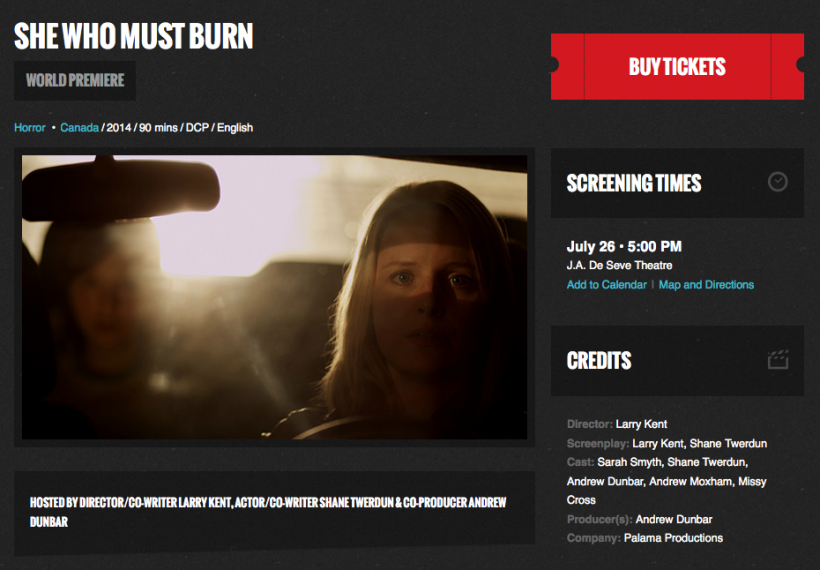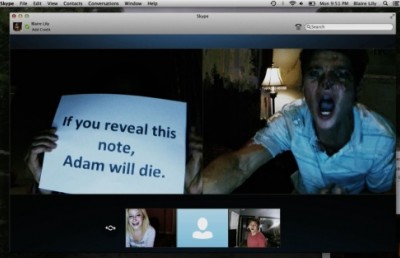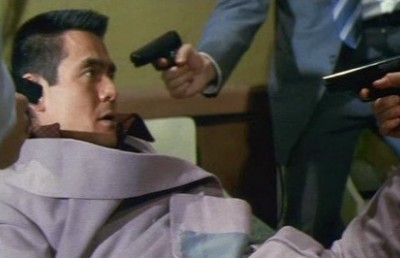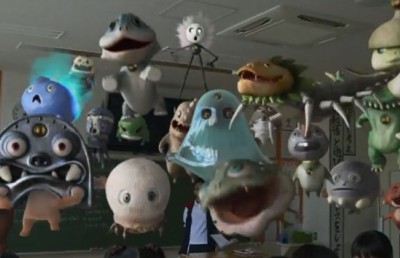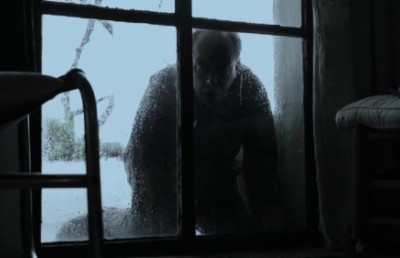She Who Must Burn: Interview with Larry Kent

Larry Kent, the godfather of English Canadian independent filmmaking, is premiering his latest film She Who Must Burn at the Fantasia International Film Festival in Montreal on July 26th. It has been well over 50 years since he got his start in Vancouver in 1962. IMDB and the Guide to the Cinemas of Canada tell us that he’s now 78 year old, which would have made him 25 when he shot his first short Hastings Street. Other sources suggest he was as young as 23. Larry tells us he turned 82 back in May, which would put him closer to 30 when he first picked up a movie camera in a Vancouver nearly devoid of any local filmmaking, much less independent. Regardless, he is widely credited as the first English Canadian filmmaker to produce an independent film in Canada, paving the way for the boom in production that followed in his wake. His first three features, Bitter Ash, Sweet Substitute, and When Tomorrow Dies put him on the map, precipitating a move to Montreal where he continued to make films through to the end of the Century. But his last three films have found him back in Vancouver, now a bustling production centre that attracts talent from all over, the polar opposite of the cultural backwater of the early 60s that so many aspiring artists fled in search of more fertile ground. As such his career brackets the emergence of a viable film industry in Vancouver, and challenges the centrality of Toronto and Montreal as the birthplaces of modern Canadian cinema. Certainly, most Vancouver filmmakers will tell you that they wouldn’t be where they are today if it wasn’t for Larry Kent’s adventurous spirit. And at 82 years young, there’s little doubt that he’s the only English Canadian filmmaker of his generation still making movies today.
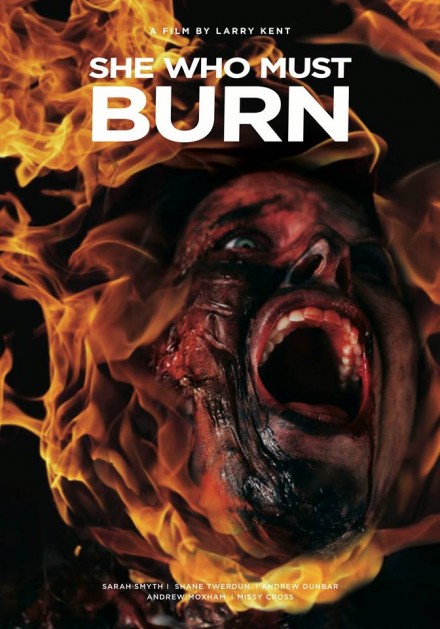
She Who Must Burn is something of a departure for Kent, a dark tale of a small town community of religious zealots headed by the Baarker family who blame a rise in regional health problems – including a rash of still born infants – on God’s wrath over the practices of a local health clinic that offers, among other things, contraception and abortion. Determined to steer their flock away from the clinic, and drive its head nurse Angela out of town, the Baarkers resort to escalating levels of violence until arriving at their inevitable final solution. Like all of Kent’s work, this one is replete with biting social critique. Unlike most of Kent’s work, this one sails fairly straight through well-established waters of the religious-themed horror and thriller genres. Without question, She Who Must Burn will be right at home at Fantasia, but it raises questions about Kent’s approach to cinema and his view of the Canadian film industry. Offscreen‘s Randolph Jordan and Donato Totaro sat down with Kent for an in-depth discussion of the new film touching on its position in his oeuvre, questions of genre, new technologies, and his continuing adventures in extreme independent production.
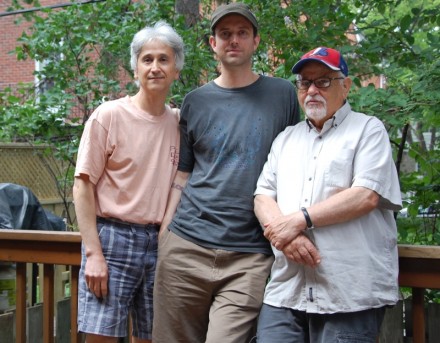
Donato, Randolph, and Larry
Randolph Jordan: So what was your motivation to make a film about these kinds of violent religious fanatics?
Larry Kent: What really bothers me is how, in the US, they’re destroying women’s rights, destroying health clinics, everything in the film is true! There’s nothing that we put in the film that hasn’t happened many, many times. There’s no scene in the film that is a lie. I think the burning at the end really goes back to lynching, so that scene might be a little more historical, but it’s not far from what can happen today. The US is really moving to that. If you look at what Kansas has just done, you know, the laws that are in the red states are unbelievable. I just got more and more angry about what they’re doing. I felt that I wanted to do a movie about it. That’s why I insist on realism as the guiding aesthetic too. This is reality.
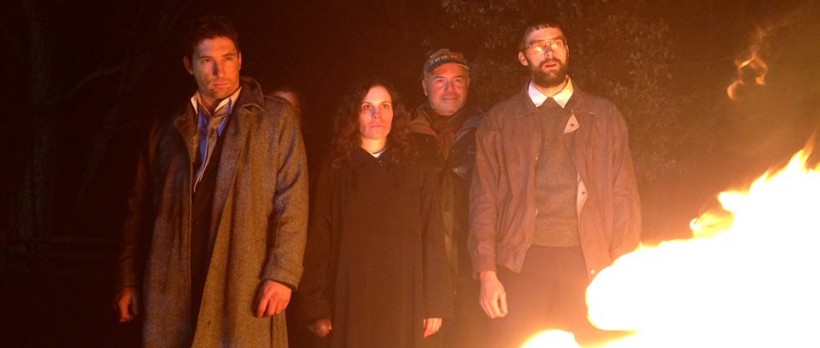
Baarkers’ BBQ
Donato Totaro: Part of this realism, and one of the things that makes this film difficult to categorize, is that normally when you get these kinds of films the antagonists are clearly tied to a supernatural element, or if there isn’t a supernatural element, the characters are truly insane. There’s neither of that in this film. There’s a suggestion of the supernatural at the end, but it could be coincidence. And the characters aren’t quite psychopaths. Rebecca Baarker has this violent nature to her but it’s connected to her own sense of the spirit. Right?
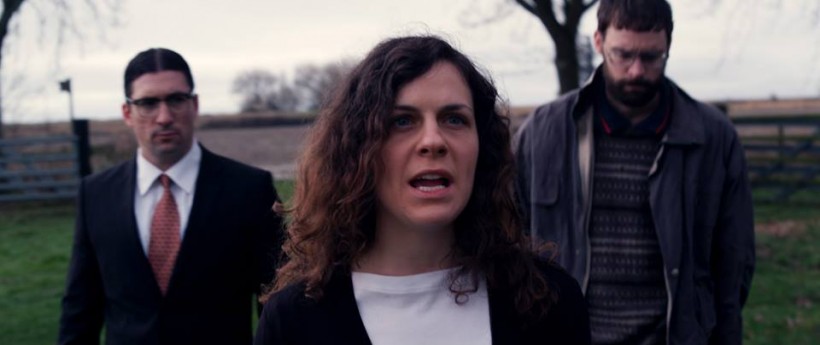
Rebecca Barker (Missy Cross) with Jeremiah (Shane Twerdun) and Caleb (Andrew Dunbar)
LK: Well I think she is suffering from a form of post-partum depression, losing every baby she has to these mystery stillbirths, which she associates with the will of God acting out vengeance against the local health clinic that offers abortions. So you kind of sympathize with her. If she’s not sympathetic then at least she’s understandable. Nothing she does in the film to other people is unmotivated in that regard. She is suffering, and trying to solve the problem as she understands it.
DT: The greatest condemnation you seem to make about these characters is that they can’t think for themselves.
LK: Yes. There’s no questioning on their part.
RJ: I was also intrigued with the environmental angle, which didn’t get played up much except for a brief reference to the idea that the local mining operation is polluting the waters and causing the stillbirths that are given religious significance by Jeremiah Baarker and his crew. It seems to be another major critique in the film, that all this religious fanaticism is to divert attention away from the real problems faced by the world today, which are environmental.
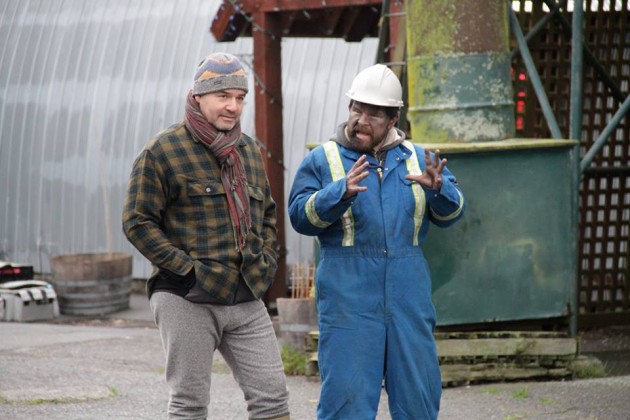
Problems at the mine.
LK: Yes. I think it’s made just explicit enough for the audience to understand the real cause of the trauma in town, and to see the power that religion has to distract the public while this is going on.
Questions of Genre, Influence, and the Kent Canon
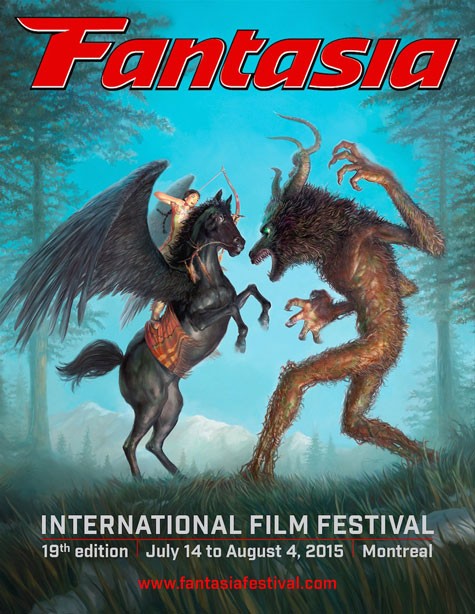
RJ: So why did you want to do the world premiere at Fantasia?
LK: Because I was asked. [Laughs] But is it a horror film? Is it a genre film?
DT: It is, but it has your realist edge to it that makes it almost unconventional in terms of genre.
LK: Actually I do want to get into as many genre festivals as I can. Do you think that genre festivals will have trouble with this?
DT: No. The way that it departs from genre norms doesn’t swing it into the art-house realm or anything like that. It’s the subtler tweaking that makes it a slippery fit for genre, but most people will probably just accept it as a genre film. And the title helps; it gives the end away, but creates a sense of inevitability of the narrative course that plays well into genre expectations.
LK: I think in this film, the inevitability adds to the tension. Why are we so pent up nowadays on not giving away the ending? And the title is lifted from Jules Dassin. He made a movie about Christ called He Who Must Die. I like that. And that’s what I wanted, a kind of biblical inevitability.
DT: Were you influenced by any other films?
LK: Well, the name Baarker attached to the religious family is a deliberate reference to Ma Barker from Thieves Like Us. But here we say, “Hey, these are not thieves, they are a different kind of criminal.” But you know, I almost never go in consciously with a film reference. I mean, I started watching films when I was 8 or 9, more than a couple of years ago, so I have the history of cinema in my bones. But I’ve never watched in the way you guys watch now. I’ve never watched with a critical eye. I just watched because I loved it.
DT: Well I’ll throw a couple of references out your way, which may just be my projections onto your work. One of them is coincidence I’m sure, but there’s a high-angle shot of Jeremiah walking down the stairs after looking for his wife who has left him after the beating, and it reminded me a lot of Faces, the Cassavetes film.
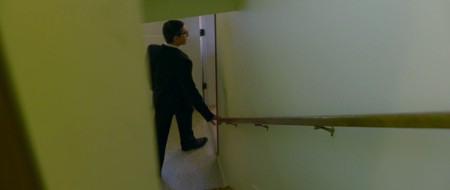
She Who Must Burn
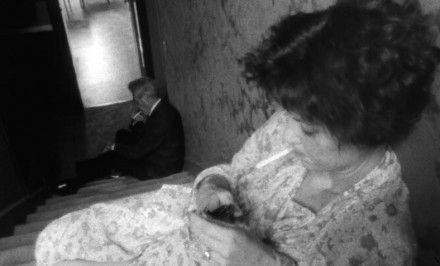
Faces
RJ: A fitting connection since you’ve often been called the Canadian Cassavetes.
LK: When was that made?
DT: 1968.
LK: I made Hastings Street in 1962 with a shot of the main character going up a staircase to a rooming house, which is very similar to that shot in She Who Must Burn.
RJ: And at the end of Bitter Ash, also precipitating some shit happening.
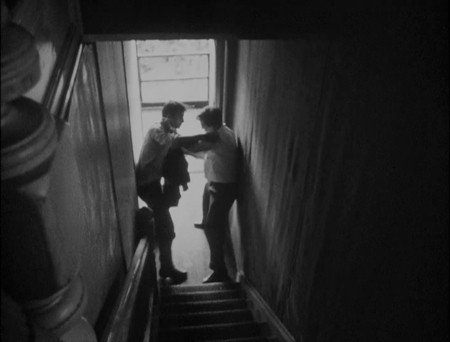
The Bitter Ash
RJ: Were you thinking of these shots while making the new film?
LK: No. It’s obviously just something I like. Because it’s the same shot as in Sweet Substitute when he runs away from the prostitute and goes down the stairs. So it’s a kind of Larry Kent cliché. Cassavetes must have stolen it from me. [Laughs]
DT: But for me that shot connects to your narrative, which – and this isn’t a criticism – feels predictable, that inevitability we were talking about. As he’s walking up the staircase there’s a sense of doom about the certainty of what will happen next.
LK: That’s deliberate. I’ve been having a fight with my sound guy to get the sound of those footsteps right as he’s going up the stairs, so that they tell the audience that shit’s going to happen.
DT: There’s another connection, also probably coincidence but it feels brilliant: the collusion that you build between the mind and the church, along with the film’s autumnal feel, made me think of Mon Oncle Antoine.
LK: Well that’s a terrific compliment. It’s hard to say because I love the film, but I have no idea when that idea was planted in me.
DT: John Carpenter did a thing called Pro Life for Masters of Horror, trapping these people in an abortion clinic, but it’s a monster movie, much more supernatural. Then there’s The Wicker Man with the sacrifice at the end.
LK: I steal everything from The Wicker Man. [Laughs]
DT: Then there’s the Quebec film End of the Line, with doomsday cult fanatics killing people to save their souls. And there have been a lot of horror films dealing with the pain of pregnancy and birth, which yours kind of fits in with as well.
LK: It’s a whole genre unto itself. Don’t know if anyone has ever treated it as such. I should label this as the “born again” genre.
DT: Maybe the one scene that is most genre-like, most suitable for Fantasia, is the head-bashing scene. One of the hardest moments in the film. And this seems to be popular lately. Drive has it. My Sweet Satan ends with a boot head crushing.
RJ: Don’t forget about Toxic Avenger! Also with an environmental theme.
LK: You guys have all these words I don’t understand! [Laughs]
RJ: Yeah, especially the after shot of the smushed head. You don’t have to give us that. You could cut around it. That’s very genre-like.
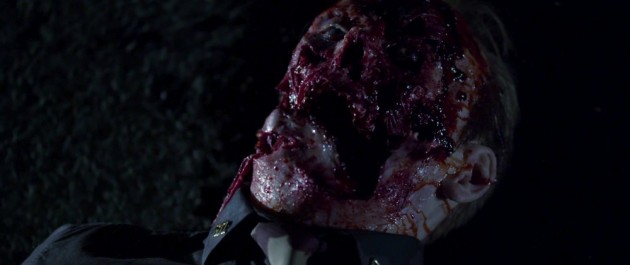
She Who Must Burn
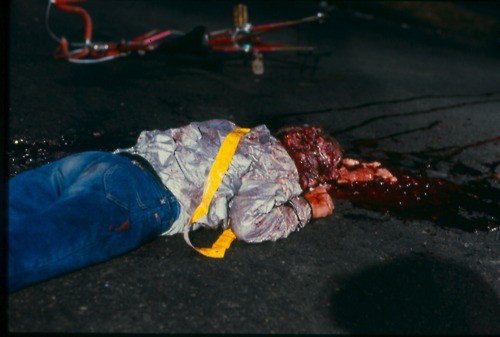
Toxic Avenger
LK: Well you don’t have to show anything if you don’t want to! I think the viciousness of that head beating comes out of the violence in Rebecca’s depression over the loss of her children. For me the darkness of the birth scene is even more painful to watch.
RJ: The scene I find most difficult is when they slit the throat of the young girl’s mother after mistaking her trip to an out of state medical clinic as an abortion run. To do that right in front of the kid, and not even justified by their own twisted logic, really hit hard.

Margaret (Jewel Staite) ambushed by the Baarkers in front of her daughter.
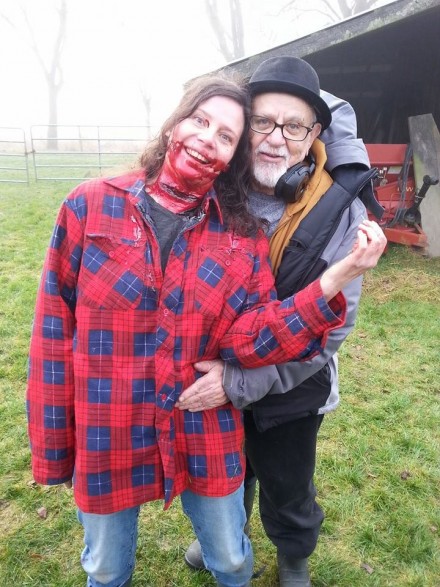
Larry and Jewel
DT: One of the things that makes this film different from your others is that there isn’t any humour in it.
LK: Strange isn’t it? Well, what about Bitter Ash?
RJ: That’s a good point. Not very funny.
LK: But yeah, Sweet Substitute is funny as hell.
DT: And especially compared to your last few films, which have a lot of humour in them. Is this serious turn perhaps your concession to the genre film market?
LK: I think if you’re going to do as dramatic a film as this then you’ve got to do it straight. It’s as tragic a drama as drama can get. Do you think that anyone familiar with my films will be disappointed by this?
RJ: It depends on what we’re watching it for. Because it does function very well as a genre film, so people might not be expecting that from Larry Kent.
DT: This one is bleaker than your other films too. Nobody gets out alive except the Sheriff, and he’s not a hero. Which is very Canadian, not to have any powerful heroes.
LK: But we DO have a powerful hero in Angela, working to help the community in spite of threats from the religious fanatics.

Angela (Sarah Smyth)
DT: Yeah but she gets burned at the end!
LK: Which brings up a good question: does this have any chance at commercial success? Or is it too bleak?
RJ: Well, you’ll have a better chance with those expecting genre than with those expecting Larry Kent. [Laughs]
Character / Actor
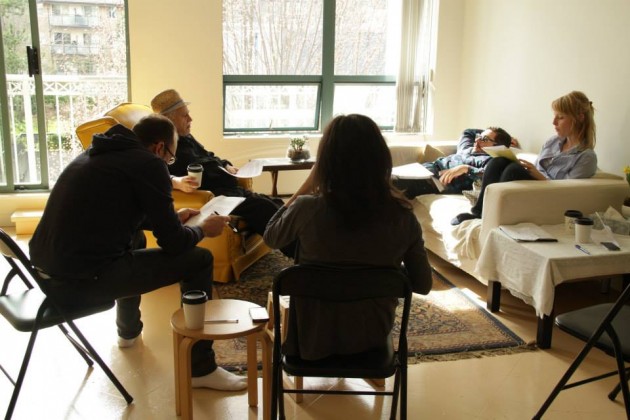
Script Reading
DT: Your films always have strong female characters. Only in this one there’s one that’s very, very good and one that’s very, very bad. Angela and Rebecca are polar opposites but very powerful. Let’s talk about the writing of these female characters. The script was co-written right? Who shaped these characters?
LK: Well you’ve seen my movies right? That answers your question. I mean, writing is a funny thing, you know. I start off with the whole thing plotted out before we start. I’ve written a treatment and we go from there. But the co-writer is always prominent in the writing as well. It’s not like he’s just a secretary and we give him a credit for it. No, he contributes tremendously to it.
DT: So how did the casting come about?
LK: We didn’t cast. All the people in the film are those I was associated with at Vancouver Film School while teaching there, and many were in my previous film Exley. One actress goes back a ways: Patricia Dahlquist, who plays the nurse who gets the blood all over her after the shooting at the beginning of the film, was in Hastings Street, Bitter Ash, and Hamster Cage as well. But actually I don’t have the same history with the other actors in this film as I have on earlier films where many of them went back as far as Hastings Street. I don’t know why. Many of my old gang came with me as far as Hamster Cage, but there has been a bit of a changing of the guard on the last two. Maybe all the others left for Toronto.
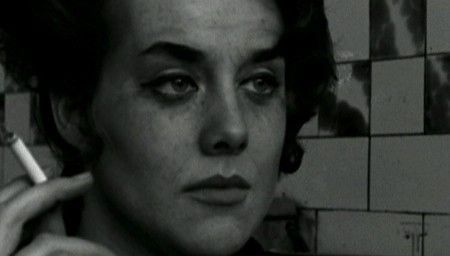
Patricia Dahlquist 1962
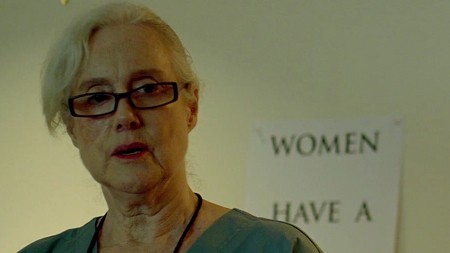
Patricia Dahlquist 2014
LK: Did you guys like the acting?
RJ: So often in English Canadian film there’s just something off about the acting, which you’ve mostly avoided here.
DT: The only time it comes up is right at the beginning with the doctor’s expression just before he gets killed.
RJ: I did think that as well a little bit, but then I thought, how would somebody look when a gun is pulled on them? We’ve seen all these representations of it in films, and it did seem a little “acty”, but maybe that’s more authentic in a way? It doesn’t last long, and the actor playing Abraham is so good we’re quickly shifted to his performance after the shooting.
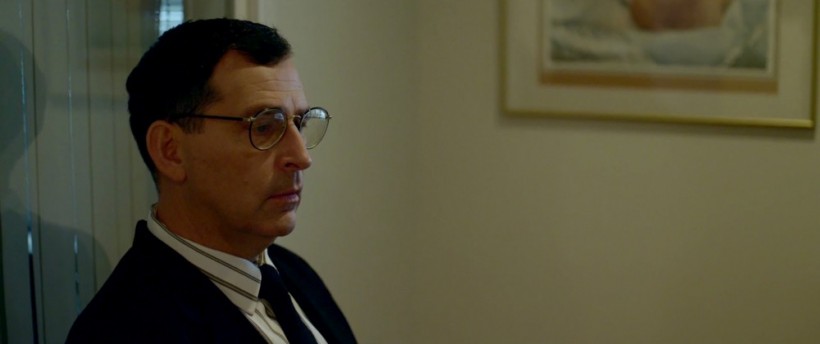
Abraham Baarker (James Wilson)
DT: Some scenes must have been difficult to shoot, like the scene where Jeremiah beats his wife.
LK: No, that was very easy!
RJ: She goes off camera pretty quickly in that scene and it’s just him on screen delivering the blows.
LK: Yeah. I think seeing her face during the rape scene earlier was much more difficult, but we had a wonderful actress so she made it go smoothly. The beating scene is more about Jeremiah.

Wife beater Jeremiah gathers his rage.
DT: At that moment he’s wearing this Marlon Brando Streetcar Named Desire 50’s tank shirt. Men don’t wear those anymore.
RJ: That’s because they call them wife beaters! There’s a reason for it.
DT: Yeah, but it’s important that you see his muscular arms exposed etc. Wouldn’t work as well with a regular t-shirt. And he’s made to look as ugly as possible with the greased hair, oversize glasses, the fact that you can see a lot of his pockmarks. That was very conscious?
LK: Yeah, it’s a funny thing to say “conscious.” What the fuck is “conscious” when you make a film? There was no arguing about the character that we wanted. Same with Caleb. I think with them, they want to be as conservative as possible because they are real church people, real God-fearing evangelists. So when you’re doing crazy things and you want to get other people to do them too, the best place to go is conservative. He’s a straight person down the line. Parting his hair in the middle, always with that fucking smirk on his face.
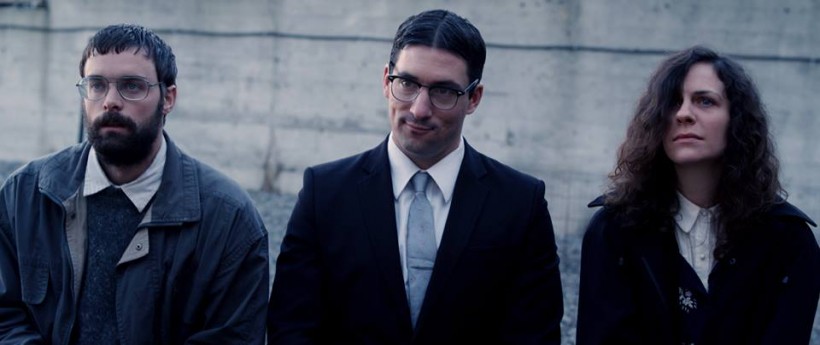
Jeremiah’s ever-present smirk
RJ: He looks like the stereotypical early 20th Century preacher type.
LK: Absolutely. Same with Caleb. But out of all the people in the film, Caleb is the one that has the big character arc.
DT: I like the Sheriff character. It’s almost as if he’s complicit.
RJ: He’s letting it happen.
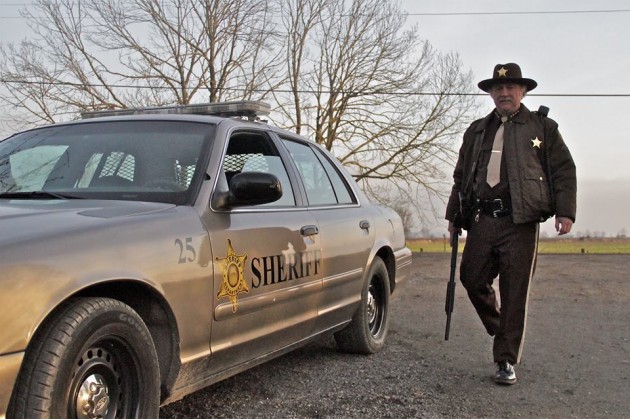
Sheriff (Jim Francis)
LK: Right. When he’s watching it happen and he comes out at the end, I think there’s a deep sorrow in him. I don’t know what you feel.
DT: His expression is open to the audience to read. Could be relief that it’s over…
LK: Absolutely. Whatever you want, you can have.
DT: And the hail that kills everyone else doesn’t hit him, which is almost supernatural.
RJ: I didn’t see that part! That whole final sequence was just kind of a blur. I saw some flashes, I heard some thumping, I saw the Sheriff watching, and all of a sudden everyone was dead.
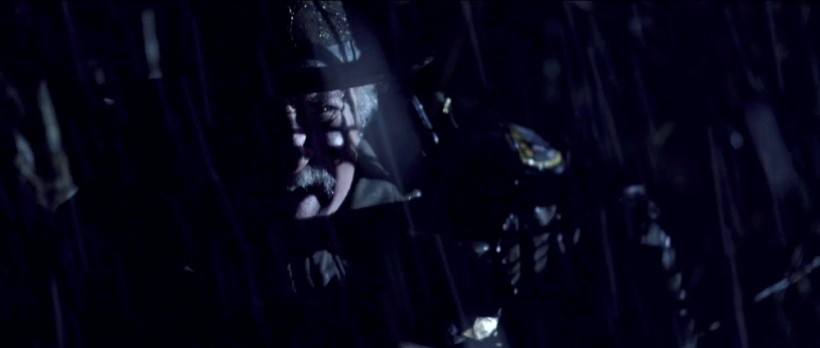
LK: What, did you take LSD? [Laughs]
DT: Well, one thing that’s definitely ambiguous is the temporal setting. You’re never quite sure when it’s set.
LK: Aha! What period do you think it’s set in?
RJ: I didn’t even think about when I was watching.
LK: That’s good!
DT: There are no cell phones, no computers, only generic looking cars.
LK: That’s right. We wanted it that way. None of the clothes are modern. And they’re all making telephone calls in the old way, aren’t they?
RJ: I didn’t even think about that. But I have a rotary phone on my office desk. That’s how I make my calls during the day.
LK: But you’ve got a computer, cell phone and all that as well.
RJ: Oh yeah. I have things ringing at me from all over.
LK: But they don’t. In the cop car there’s no computer. It’s all radio.
DT: And that contributes to the feeling that this is such a small, isolated community. Could this story possibly take place in a city setting?
LK: No it couldn’t be in a city setting. Absolutely not.
Digital Production

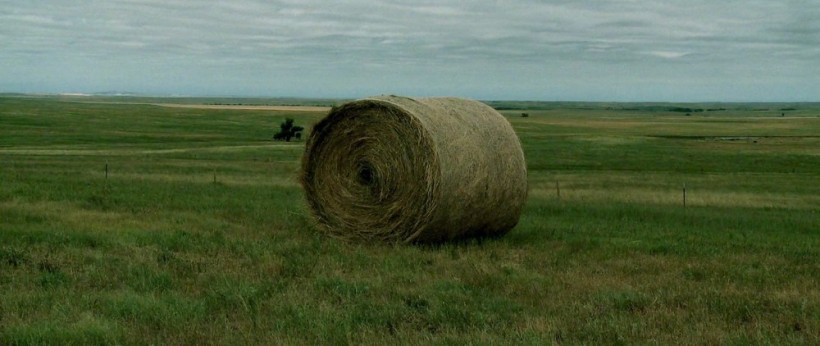
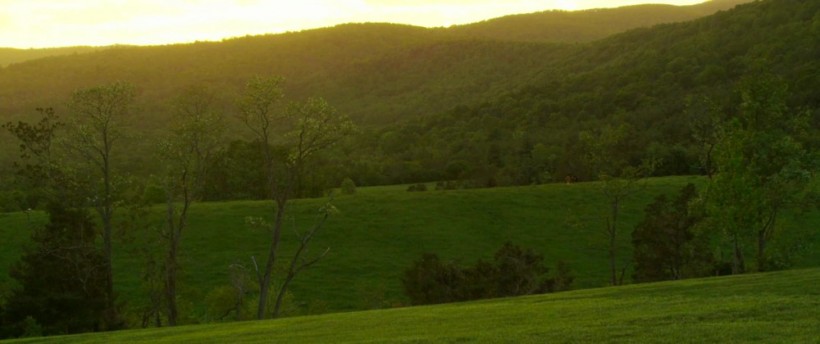
RJ: One of the most striking aspects of the film, for me, was the combination of the vast, bleak landscapes that were shot so beautifully, almost romantically, and your insistent and very self-conscious hand-held camera all the time, which is more in line with a realist aesthetic. Which of course goes back to the early days when it was a necessity. But today, presumably, you have other options. So why do you go back to that?
LK: Well [laughs], first of all it was the Red Epic, which was a heavy camera.
RJ: Are you saying that part of it is that the camera is so heavy that the operator can’t hold it up properly? [Laughs all around]
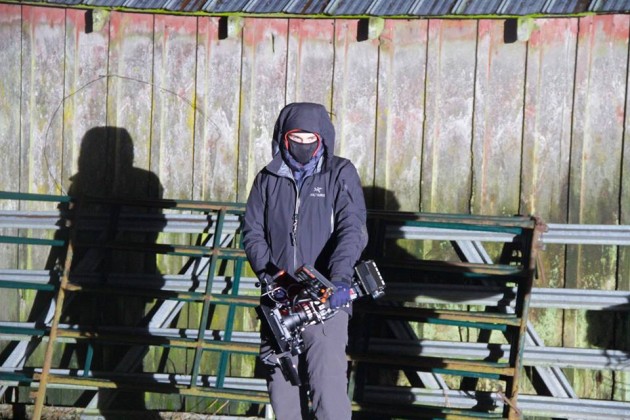
Stirling Bancroft with the Red One Camera
LK: Stirling Bancroft is a really young guy and I really cursed him that he couldn’t keep it steady. No… [Laughs] I thought he did a very good job of it. That was a deliberate decision not to try and make it as steady as possible but to let you know that the whole movie is kind of off-kilter. You don’t want to take the viewer out of the film by overdoing it, but you don’t want them to be too comfortable either. That’s what it’s about for me. And I will also say that I wanted to have a bit of feeling like from the early French New Wave, which is tied to the handheld camera movement as well.
RJ: So was this your first time shooting with the Red?
LK: Yeah.
RJ: Nice work.
DT: Yeah, in Hamster Cage you have these images of the natural landscape several times but here it’s much more pronounced. Within the first few minutes we get dialogue about the storm coming in, and the whole film is framed around that progression.
RJ: It works really well, it’s well paced that way, the slowly gathering storm and then the full release for the climax of the film. So I have to ask: the storm effects must have been CG, right?
LK: Yes. That’s where we spent our money.
RJ: It’s just the right kind of CG. Not the full-blown fantasy effects approach but tasteful evocations of natural phenomena with just the right touch. The changing sky and the lightning flashes and such.
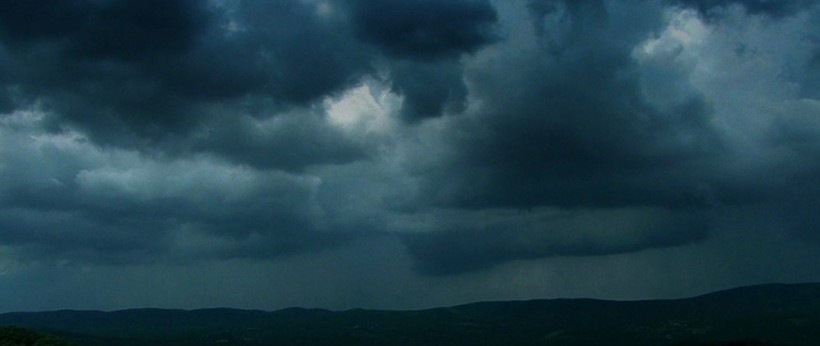
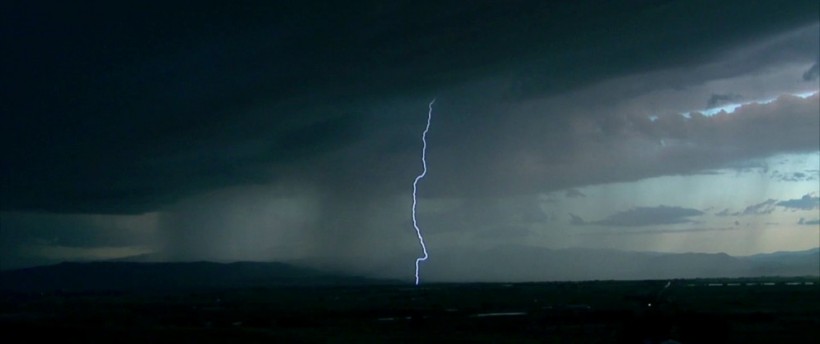
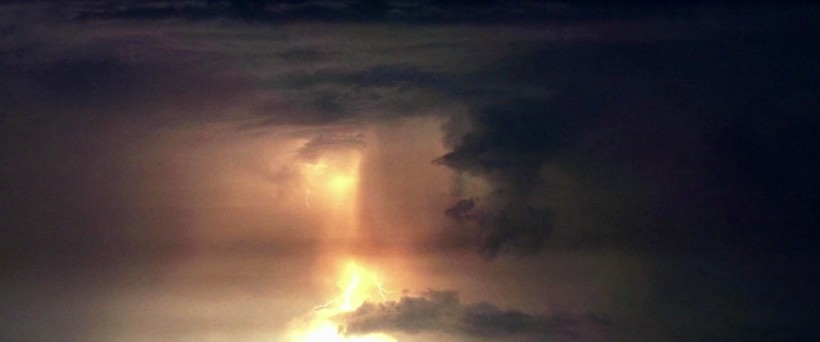
LK: But we did whatever we could with practical effects, rain machine, wind machine, real fire. The guy who did the burning actually invented a gel which won the Academy Award a couple of years ago, and he applied that to her face to simulate the burning skin effect as we shot her through a real fire in front. I think it works.
DT: So how many films have you shot digitally now?
LK: The last three. Hamster Cage was always intended to be transferred to film, but Exley and She Who Must Burn were digital all the way through.
RJ: What are some advantages or disadvantages of shooting digitally?
LK: Well one of the advantages of digital is using the monitor on set, but I resisted initially. We didn’t use the monitor on the first two. I liked having the actors know that I was right there with them on set. The problem is that the crew can completely wipe you out so that you can’t view it directly. Once you use the monitor you can see your shot, see your performances, and for me, performance is paramount. She Who Must Burn is the one during which I became used to using the monitor, since we had a crew large enough to obstruct direct viewing.
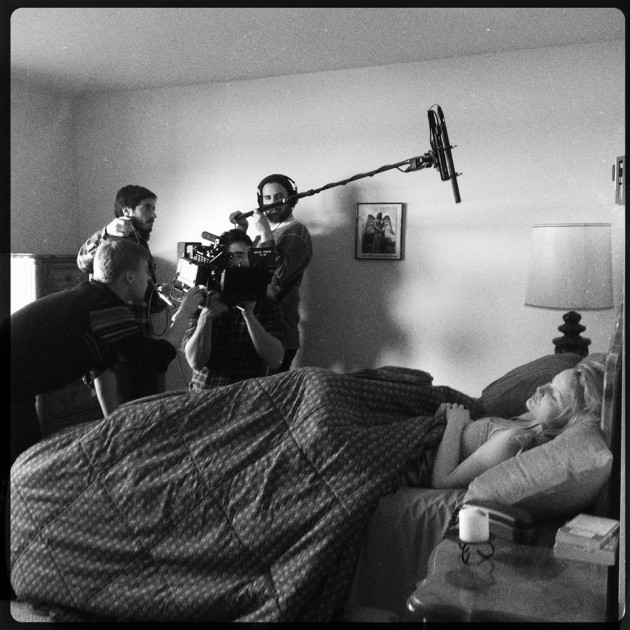
Crowded Set
DT: Does that tend to replace watching the rushes then?
LK: No, you’ve still got to watch the rushes, you know, in case you’ve left something out that you didn’t realize in the adrenaline of the moment. But with rushes you can’t do anything about what’s up on the screen. All you’re watching is, “Oh shit, this is what I’ve got.” On set you can watch the monitor live and re-take on the spot if necessary.
DT: Would you ever change a lighting set-up based on what you see on the monitor?
LK: No, you’ve got to trust your cinematographer for the lighting set-ups. And I don’t believe in using storyboards or shot lists. I get the actors and do a quick rehearsal, and let them walk as they like. Then I block it according to that, and I want the cinematographer by my side so he can see what I’m doing. I don’t tell him how to do it, but I tell him what I want in specific generalities. We’ll talk about lighting in generalities.
DT: How much image tweaking did you do in post-production?
LK: I went through the film with my colourist and the cinematographer, and I’d say things like, “For me this is far too dark, don’t let the skin tones go.”
DT: The skill set for a colourist now must be totally different as it’s all done on computers.
LK: Yes, I’m sure there are some photochemical guys who never survived the transition to digital. But that’s why you need your cinematographer there, because you have to talk about aesthetics with the guy. But I like digital. It gives me what I want. How do you argue with a photochemical guy who says, “You can’t go too red because it’s going to bleed”? You have to believe him. Or not, and bleed. In digital, you can see what you’re doing right there. And it doesn’t degrade over time. What you’ve done is there forever. I think the audience sees much more of what the director wants in digital. Film gives you a different emotional response, but digital gives you an emotional response too. You have to know what response you want, and how to get it.
RJ: Disadvantages?
LK: Apparently there are some things you can’t do digitally. There’s a moment in my film The Apprentice in which I had used a step-printed slow motion technique to emphasize a death scene. I wanted to do that again in She Who Must Burn but my editor kept saying I couldn’t. I have to defer to him because he knows more than me, but I am very skeptical of that answer. The disadvantage is that the editor knows more about digital than I do.
RJ: I think he’s right though. One thing you really can’t re-create in digital is the look of optically printed effects. It just doesn’t look the same in digital. So if you like that look, it’s a film look, you can’t get it in digital.
DT: Right. But in general I think that digital is much better for independent filmmaking.
RJ: Does it save you any money?
LK: No.
Music and Sound
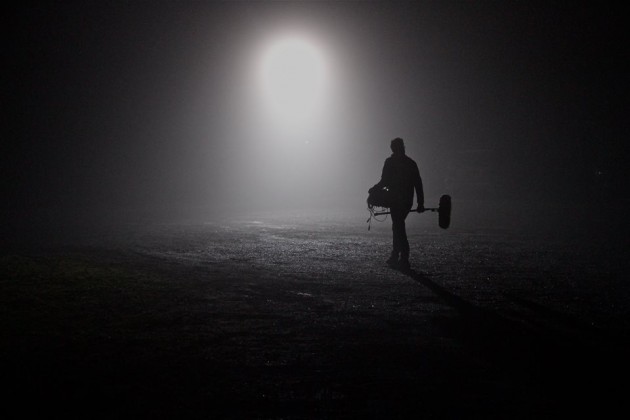
Location Recording
DT: I noticed Chris Alexander’s name in the credits for some of the musical score. Is that the Chris Alexander from Fangoria?
LK: That’s Mr. Fangoria, and his music appears in a couple of scenes. The rest of the score was composed by Alex Hauka. But I insisted on having this religious brand of folk music that comes up across the film, and all that was done by a group called The Wooden Horsemen, of which our actress Missy Cross, who plays Rebecca, is a part. They wrote all the songs and lyrics.
RJ: The songs are very effective, particularly right in the opening credits after that brutal opening scene. But just before that is another amazing moment, right after Abraham shoots the doctor he starts singing “Amazing Grace” and this ambient music comes with some dissonant harmonies, which sends the whole thing just a little off kilter before it settles into the opening folk song as a kind of counterpoint.
LK: That bit of scoring was from Hauka. And do you hear the siren of the cops coming at that moment?
DT: Yes.
LK: That’s very important.
DT: For all the realism there are a couple of moments of subjectivity. Like when they’re calling Caleb a coward, you hear that word reverberate several times, which isn’t realistic. It threw me for a loop amidst the realism throughout the rest of the film.
LK: Yeah, our sound designer did a terrific job.
RJ: So often smaller budget films fall apart at the level of sound design but that’s definitely not the case here. Was all the dialogue recorded on set or was there much ADR?
LK: We did do some ADR but our guy was great at it so it still feels very realistic. But we recorded a lot on location and managed to cut out a lot of traffic noise and stuff. And then add certain effects when necessary.
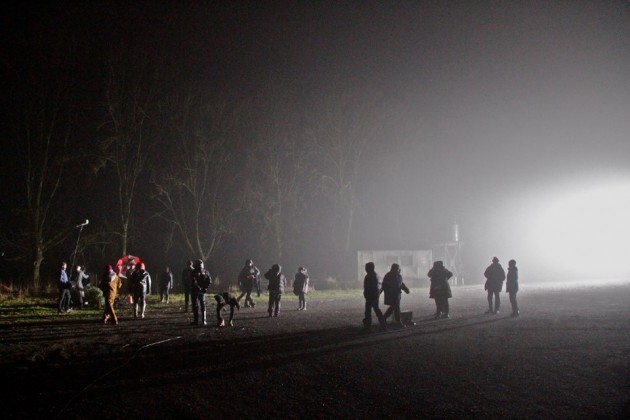
Back to Vancouver: Independent Funding and the Canadian Film Industry
RJ: Why did you start making films in Vancouver again after so long in Montreal?
LK: Montreal is completely the wrong place for me. And Toronto would have been the wrong place for me too. I’ll preface with a story, if I may. When I arrived in Montreal in 1967 I went to the National Film Board and got them to give me a job. They screened Bitter Ash. Response was divided. On the left side of the room were the English and on the right side were the French, which is ironic [laughs]. The English section hated the movie. Hated it for its amateurism, hated it for its theme, absolutely virile hate, hate, hate. On the French side, they loved it. But they had their heroes. Jutra had just made À tout prendre, which I loved, but he was going in a different direction. He had Quebec completely in his sights. He wanted to talk about Quebec. I wasn’t doing that, and the English part of Montreal just hates me. I worked at The Gazette, but other than John Griffiths who always gave me good reviews, the rest of them absolutely hated me. Hamster Cage was accepted for the Montreal World Film Festival but they wouldn’t play it in competition. Donato, you once wrote that Mothers and Daughters is a “sensitive and interesting film”, but Toronto wouldn’t accept the fucking thing! I mean, what would they have to lose by programming that? It’s a good film! The worst reviews I’ve had are all from Toronto.
DT: If you had been born in Quebec and your name was Laurent you’d probably have a statue in your honour by now. [Laughs all around.]
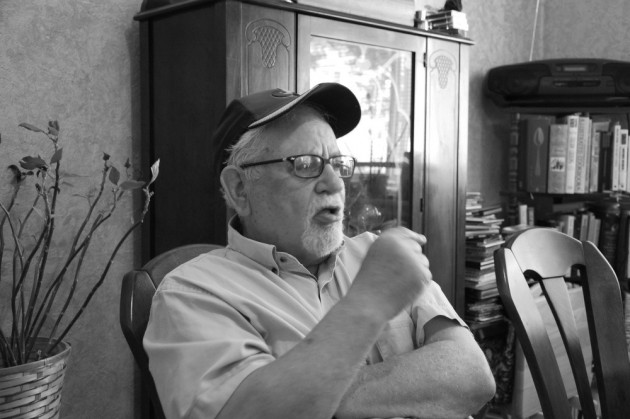
LK: Yeah. But actually, the recent renewal of interest in my work, which led me back to Vancouver, started here in Montreal. We didn’t have a pristine copy of High, my first Montreal film. [Concordia University professor] Dave Douglas told me that the Cinémathèque québécoise had screened a series of banned films recently and High was one of them. They wouldn’t have screened a cut version, so we called them to inquire about what they had in their vaults. They had a 16mm copy, so we went there and I took a look at it. The minute I realized that this was the original reversal copy I stopped it and said, “This is it.” We managed to get a print made and then I went back to the Cinémathèque and said, “You know, the people who made the film have never seen it because we were banned etc. How much would it cost to screen the film here?” It was a lot of money, money that I didn’t have. A week later I got a phone call from the Cinémathèque. She said to me, “Would you like a retrospective of your films at the Cinémathèque?” I said, “What’s the question?” She repeated it, and I said, “Are you crazy? Of course, I’d love it!!” So the first retrospective of my films actually came with the Cinémathèque here in Montreal. But we got no press from The Gazette. We got no press at all from Hour and all those free weeklies. But somehow that retrospective influenced one in Toronto, which in turn influenced Vancouver, so that was a huge deal for me. And with that exposure I got interest from Vancouver film people to start working on new films. More recently, TIFF made a 35mm blow-up of Bitter Ash and screened that, which also screened at the Pacific Cinematheque in Vancouver just last January.
DT: You’ll appreciate your own iconoclastic, completely independent spirit once you’re dead.
LK: You know, all I want right now is for someone to fucking fund me! So I don’t have to keep putting my wife in the poorhouse. On She Who Must Burn I went to Telefilm to ask for finishing money. We went to Telefilm in Montreal, which was a mistake. Because nobody here, other than you guys, know about me here. Even though I spent 1967-2001 making films in Montreal there was no recognition of anything I did except for High. I was totally ignored in Montreal. I didn’t get funded or anything. So we made the film in Vancouver and we should have gone to Telefilm there where they knew me better. The problem is that we came here she didn’t fucking know who I was! Longevity doesn’t mean anything in Canada. I think Quebec is great, but the English section of Telefilm here would never give me a dime if their lives depended on it. And nobody questioned them on that.
DT: So was there any government funding at all on this film?
LK: No. But I’ve only had government funding on one feature film: Hamster Cage, out of Vancouver. That was terrific. Otherwise it’s all, “Fuck you, we don’t care.” I have made all my other movies on my own, except for four films that I’ve done with a commercial producer. But I don’t know anyone who was a contemporary of mine in Canada who is still making films. I just don’t see how you can absolutely ignore this. I think what it’s about is that Canada wants this, kind of “good boy” thing. Don’t make any films that are going to disturb the waters.
RJ: Unless you’re French Canadian.
LK: And that’s great. They’ve funded these guys, they’ve taken chances with these guys, and they’ve let them complain. They’ve let them put out their own psyche. That’s absolutely outside the world of English Canada.
RJ: So what’s the biggest problem with the English Canadian film industry?
LK: The Canadian film industry has funded everybody but filmmakers. When the CFDC started the idea was to give money to the filmmaker. Then that was changed to give money to promote the producer. Then THAT was changed to promote the distributor. And the distributors were given envelopes of money and they did absolutely nothing to promote films. Then they took a step back and funded filmmakers again, but weren’t comfortable so quickly went back to funding producers.
DT: And they want to fund established people who have sold product already, right?
LK: Which is the biggest lie. What Canadian film has earned a million dollars in Canada? None. And they’re funding huge amounts of money to friends and lying about who has made a million dollars on films that nobody has seen. How come you’re giving them an envelope? What English Canadian movies has anybody even seen in Canada?
RJ: So where did you get the money for this film?
LK: Don’t ask.
DT: Who are Palama films?
LK: I had a triple partnership with two good friends: Perry, Larry and Mario: Pa-La-Ma. Mario was around to get the company up and running but he died before we actually produced any films, so now we’re just two. Perry (Pericles Creticos) has been with me co-producing every one of my films since Mothers and Daughters in 1990. I met Perry in the 80s as an acting student in one of the classes I was teaching here in Montreal. We got to know each other very well. He was working with his father in the restaurant business and wanted to get into filmmaking. We got together and made Palama Film Productions with Mario. It was great. I had somebody to talk with about films, to run ideas by, to keep me on track. He’s been a great help, and with every film he became more helpful as he learned the business and got more involved, and was very active in the production of She Who Must Burn. It has been marvelous not to have to do all this quite so alone for the latter half of my career.
RJ: You did try an Indiegogo campaign right? I kicked in $50.
LK: And we used it!
RJ: I can see it up there on the screen! The bottom end of one of those lightning bolts I think. [Laughs] But the campaign didn’t go very well did it?
LK: We made $1000, which we were grateful for. But we didn’t know how to do it. It’s really a full-time job for a couple of people to sit there and keep hammering away. We did it too early, before we had good material to show. But you need money to pay people to do it. We live in a commercial world, so you’ve got to be able to sell, sell, sell.
RJ: So you’re not going to tell us where you go the money for the film?
LK: We put up our own money. I didn’t go the credit card route because I didn’t want debt. But we had a bit of money left from Hamster Cage’s Telefilm funding, so we used that. Parry and I saved up a couple of bucks, and scraped the rest from here and there. And I think it looks better than most million dollar Canadian films.
RJ: Agreed.
Addendum: She Who Must Burn has been picked up for distribution by Midnight Releasing and is available for streaming, on demand or on DVD

